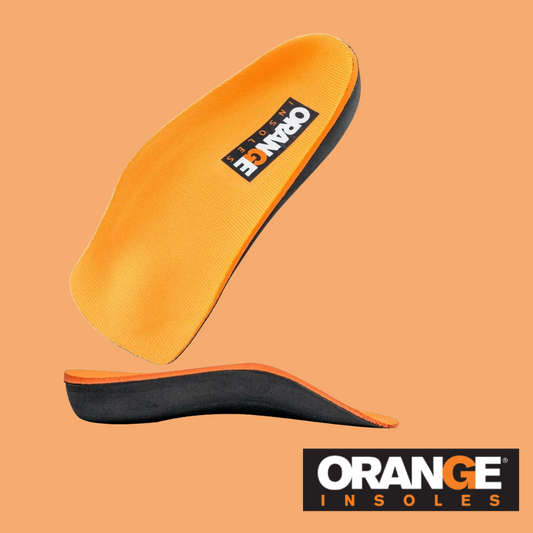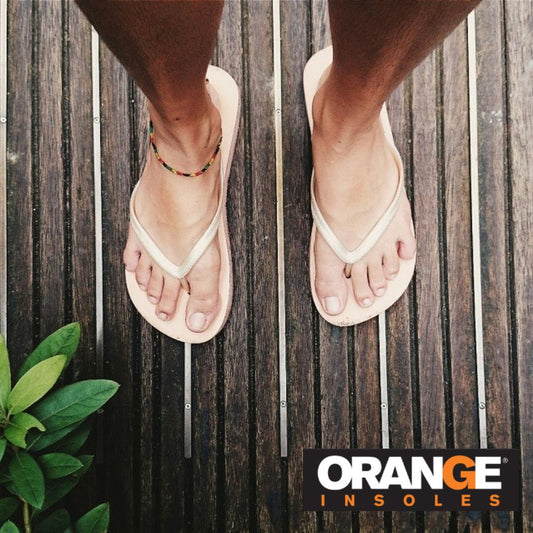Did you know there are 28 bones in your foot? That’s a quarter of the bones in your entire body! There are also thirty-some joints, more than nineteen muscles, and hundreds of ligaments and tendons. It makes sense given that the muscles, bones, and all the parts of your foot support your entire body weight all day, every day. They’re also moving and twisting and flexing all day which makes them fairly prone to injury if they’re not cared for properly.
We talk a lot about the different injuries or issues that can impact your feet but we never really dig into the parts of the foot. So, we wanted to do a quick overview of the basic anatomy of the foot. We’re not doctors but we do talk about this stuff a lot.
So let’s take a look at the parts of the feet and which injuries can impact those parts.
First, the foot is generally broken up into 3 parts; The forefoot, the midfoot, and the hindfoot.

The Forefoot
Your forefoot is basically made up of your toes and the ball of your foot. It contains five toes (phalanges) and five longer bones (metatarsals).
The first metatarsal bone is short and thick and helps propel you forward when you walk.
The second, third, and fourth metatarsal bones are the most stable of the metatarsals.
The forefoot meets the midfoot at the five tarsometatarsal joints.
Pain in the Forefoot
Metatarsalgia: Metatarsalgia is a blanket name for pain in the foot, or more specifically the ball of the foot. It typically refers to inflammation and is generally thought of as a symptom of other conditions.
Morton’s Neuroma: This condition occurs when the tissue thickens between the third and fourth toes. Anything that pushes your foot into an unnatural shape (high heels, for example) can cause a neuroma. If you have conditions like hammer toe (which can also impact this part of the foot) or flat feet, you’re more likely to develop a neuroma.
Fracture: The metatarsal bones are the most frequently broken bones in the feet.
The Midfoot
The midfoot is made up primarily of arches of the feet. The arch is made up of the three cuneiform bones, the cuboid bone, and the navicular bone. The arch of the foot plays a key role in weight-bearing and stability. In the middle of the foot, you’ll also find the plantar fascia, a band of fascia along the bottom of the foot. This band bounces your foot upward whenever you make impact with the ground…it’s kind of life a spring.
Pain in the Midfoot
Plantar Fasciitis: Plantar Fasciitis occurs when this band is stretched too far and becomes inflamed or torn. While the band goes across the bottom of the foot, the pain tends to centralize in the heel.
High Arches: High arches occur when you have a significant arch in the middle of the foot. While this might not seem like a big deal, it ends up putting access weight on the ball and heel of the foot, causing pain and inflammation in those areas.
Fallen Arches: The opposite of high arches, this occurs when the the feet flatten too much when standing or walking.
The Hindfoot
The hindfoot is made up of the feel and the ankle. This is where you’ll find the talus bone which supports the leg bones (tibia and fibula).
You’ll also find the calcaneus (heel bone), the largest bone in the foot. The calcaneus plays an essential role in supporting body weight.
The talus rests on top of the calcaneus and forms the pivoting joint of the ankle.
Injuries Common to This Area
Heel spurs: Heel spurs are bony growths on the underside of the calcaneus and they cause pain when standing or walking. These are common in people with plantar fasciitis.

Muscles and Their Jobs
Verywellhealth describes the muscles and their uses as such:
- Tibialis posterior (supports the foot's arch)
- Tibialis anterior (allows the foot to move upward)
- Peroneus longus and brevis (controls movement on the outside of the ankle)
- Extensors (raise the toes to make possible to take a step)
- Flexors (stabilize the toes and curl them under)
Tendons
Given there are hundreds of tendons in your foot, we won’t talk about them all. But we can’t talk about tendons in the foot without talking about the Achilles tendon. Probably the most notable tendon in the foot, it runs from the calf muscle to the heel. It is the strongest and largest tendinous structure in the body. The Achilles tendon is behind your ability to run, jump, climb stairs, and stand on your toes. So be kind to it!
Support Your Feet
Your foot is also made up of hundreds of ligaments but we’re not teaching an anatomy class here. The most important thing you should know about your feet, is that they need the right support. If anything is “off” in one area, it can impact the whole foot and your foot or feet can impact your balance, your alignment and, obviously, your ability to walk or run comfortably.
An insole like Orange Insoles can help treat and prevent most of the conditions mentioned here and help support all parts of the foot, from the toes to the heel. The right support can also have an impact on your ankles, up into your calves, your knees, and even into your spine! It’s all connected!
So rather than starting at the top, start at the bottom and make sure all the parts of your feet have the support they need.


























































